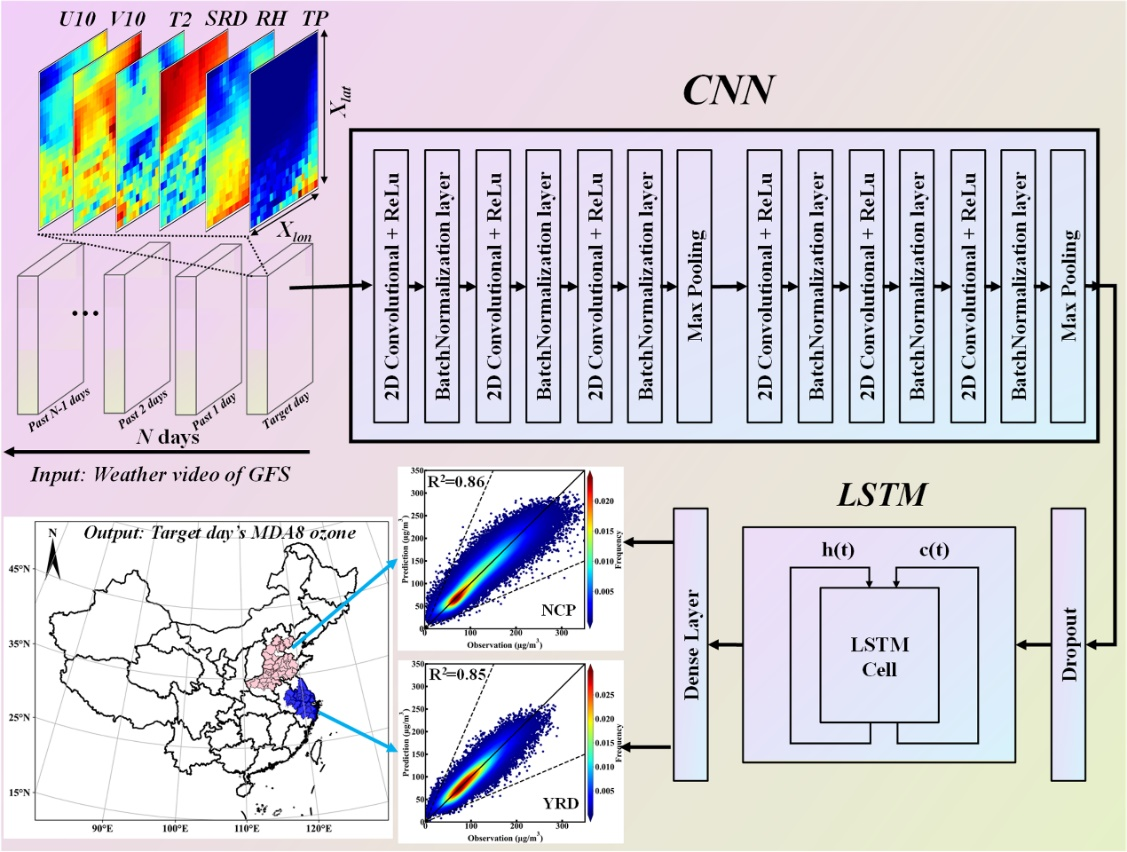
Recently, a research team led by Prof. XIE Pinhua from the Hefei lnstitutes of Physical Science of the Chinese Academy of Sciences, has developed a novel prediction model for surface ozone concentration in the North China Plain (NCP) and Yangtze River Delta (YRD) regions. The model is based on a sequential convolutional long short-term memory network framework (CNN-LSTM) framework that integrates spatiotemporal meteorological features, addressing key limitations in existing forecasting methods.
The research results, which were published in Environmental Science & Technology, provided a new technical approach for ozone pollution early warning.
Surface ozone has emerged as a major summer air pollutant, often linked to high temperatures and low humidity. However, ozone levels are also influenced by complex meteorological factors such as atmospheric circulation, solar radiation, boundary layer height, and cloud cover—making accurate forecasting a persistent challenge. While traditional machine learning models often overlook these spatiotemporal dynamics, numerical models face high computational costs and limited ability to predict high-concentration ozone episodes.
In this study, the team developed a multi-scale mapping model using meteorological forecast data and CNN-LSTM architecture. By incorporating meteorological fields across various spatiotemporal scales, the model achieved high prediction accuracy—with hit rates of 83% in the NCP and 56% in the YRD for high-concentration ozone events (MDA8 ≥ 160 μg/m³), and an R² ≥ 0.85 in explaining daily ozone variability.
The model also successfully quantified the impact of typhoon position shifts on regional ozone levels, further proving its robustness.
"We've gained a clearer picture of how weather patterns drive ozone pollution, which can really support better early warnings for high-risk ozone days," said Prof. XIE Pinhua.

CNN-LSTM Machine Learning Framework Integrating Spatiotemporal Evolution Characteristics of Weather Processes (Image by HU Feng)